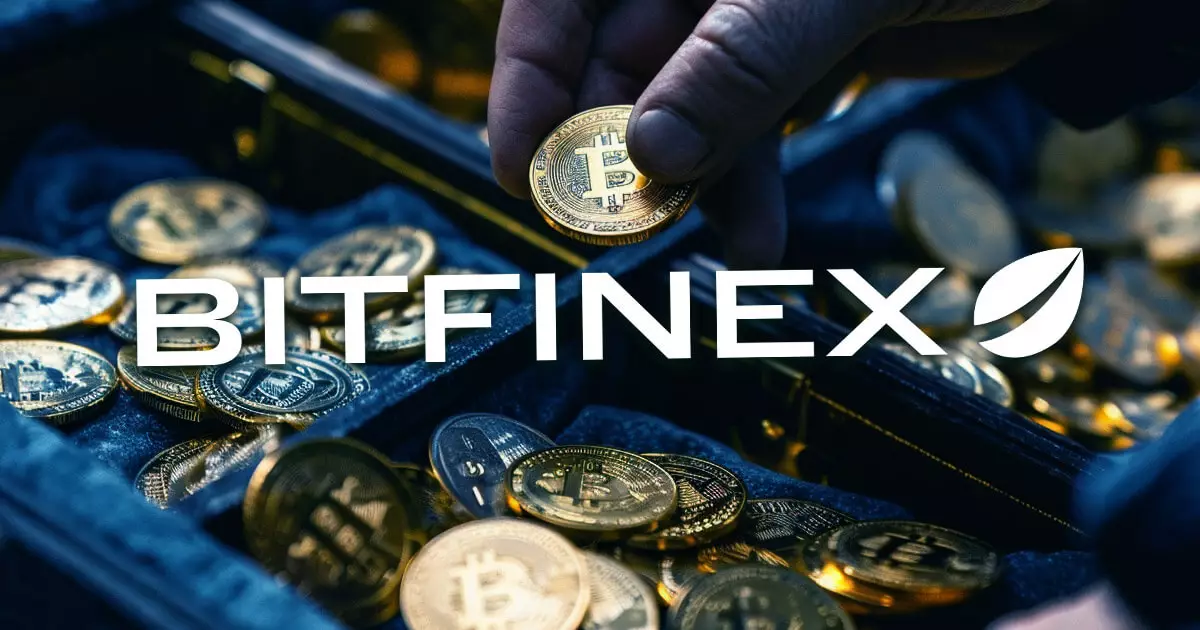In 2016, Bitfinex, one of the leading cryptocurrency exchanges, experienced a significant security breach that resulted in the theft of around 120,000 BTC. This incident marked a pivotal moment in the cryptocurrency space, amplifying concerns regarding the security protocols of digital asset platforms. Fast-forward to recent governmental filings, which indicate that Bitfinex may be the only entity eligible for restitution related to this massive cybercrime, the repercussions of this breach continue to unfold. This situation speaks volumes about accountability and how financial recovery systems operate within the realm of digital currencies.
A recent government document revealed that aside from Bitfinex, there may be no other individuals or parties recognized as victims under the Crime Victims’ Rights Act (CVRA) or the Mandatory Victims Restitution Act (MVRA). This stance positions Bitfinex as the singular entity affected by this extensive hack, simplifying restitution efforts but complicating the narratives surrounding individual user losses. The government noted, “The defendant estimates that it is the sole victim with sustained financial losses from the hack,” which underlines the complexities in parsing out victims in such a decentralized environment as cryptocurrency trading.
Bitfinex’s Controversial Response
In the wake of the hack, Bitfinex took drastic measures to address the loss. The platform decreased all customer account balances by 36%, effectively socializing the financial repercussions of the theft among its user base. To compensate for these losses, Bitfinex introduced BFX tokens, which representatives claimed would allow users to recover their funds through trading or redeeming them. This move, however, did not sit well with a portion of the trading community and raised ethical questions about the sharing of loss responsibilities within a centralized exchange framework. Despite the initial backlash, this strategy appears to have provided a temporary fix, enabling Bitfinex to maintain operations while addressing user grievances.
The recovery process for the stolen assets has been a continuous effort with active collaboration between Bitfinex and law enforcement agencies. February 2022 saw significant progress when authorities managed to recover 94,643 BTC, valued at approximately $3.6 billion at the time. This recuperation was a notable milestone, showcasing law enforcement’s growing capability to tackle cybercrime within the cryptocurrency sector. However, the exchanges’ responsibilities extend beyond recovery, as they have contractual obligations to their token holders, particularly those who obtained Recovery Right Tokens (RRTs) following the hack.
With the current legal landscape tilting in favor of Bitfinex as the identified victim, it alters the restitution narrative and simplifies potential pathways for reclaiming seized assets. The exchange has committed to using recovered funds to pay back RRT holders, and post-fulfillment of these obligations, it aims to distribute the remaining assets to holders of the UNUS SED LEO token. This strategy reflects a methodical approach to manage both user concerns and regulatory responsibilities.
In a broader context, the aftermath of the 2016 Bitfinex hack also poses implications for the cryptocurrency market itself. As legal resolutions loom, the market could witness fluctuations, particularly as traders may react nervously to the prospect of large volumes of BTC re-entering circulation. Even recent reports showed Bitcoin prices dipping slightly after the filing, reflecting the uncertainty in the market.
The 2016 Bitfinex hack remains a cautionary tale, showcasing the multifaceted issues surrounding accountability, restitution, and user protection in the cryptocurrency space. As the legal proceedings evolve and Bitfinex finds itself at the epicenter of recovery efforts, it remains crucial for stakeholders—users, exchanges, and regulators alike—to learn from this incident. The complex interplay between innovative financial technology and regulatory frameworks continues to challenge the stability and trust that underpin the rapidly evolving cryptocurrency environment.

